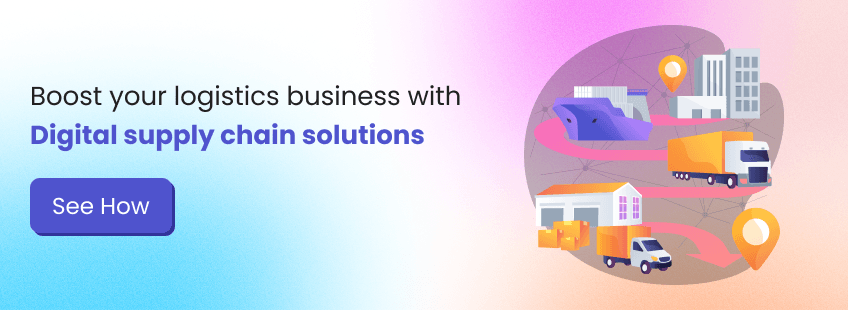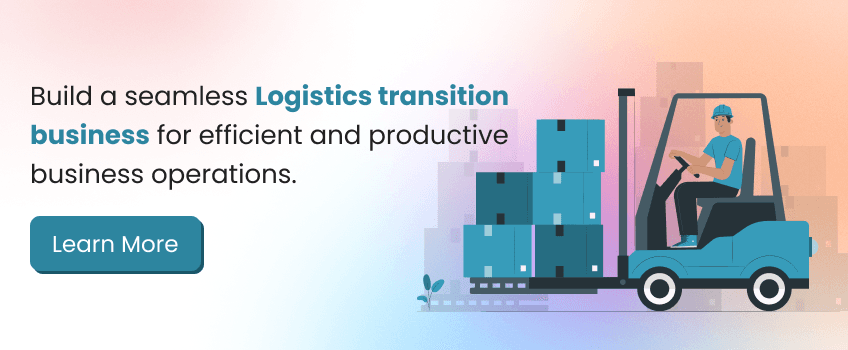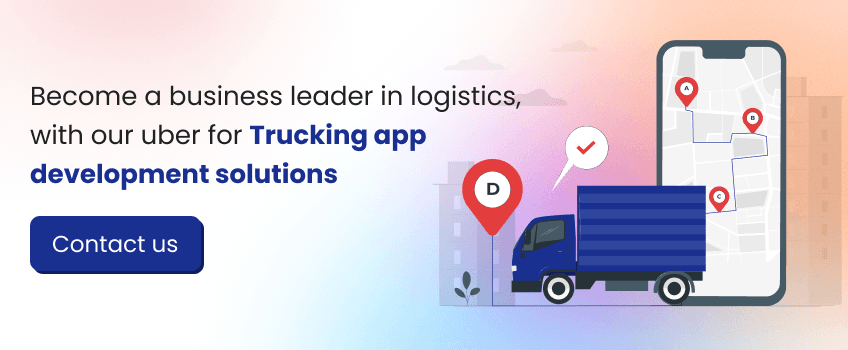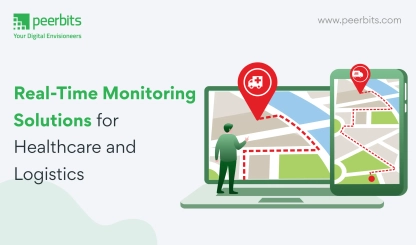Not too long ago, getting a truck booked for shipments meant dealing with endless calls, paperwork, and follow-ups. It was a slow, manual process that drained time and effort. But things are changing—fast. Today, with everything becoming on-demand, logistics is catching up too.
In this blog, we’ll explore how the concept of Uber for trucking is modernizing logistics. From reducing delays to simplifying operations, it’s helping businesses move goods faster and smarter. We’ll also cover how this shift opens the door to better control, reduced costs, and real growth.
And it’s not just buzz. Big names are jumping in. Amazon’s reportedly building its own ‘Uber for trucking’ app, shaking up both the transport and software space. Even Uber, after nailing the ride-hailing industry, is eyeing the logistics sector next.
With the global logistics market projected to hit $20124.5 billion by 2033 at a CAGR of 7.3% from 2024 to 2033, the opportunity is massive. If you're planning to scale or digitize, now is the right time to explore logistic & transport software development services and see how they can fuel growth in this rapidly expanding space.
A deeper look into the trucking business
Trucking in last six decades has changed steadily. The two major changes that we can recall comprise Interstate highway system and deregulation through the introduction of Federal Aid Highway Act of 1956 and Motor Carrier Act which pushed the trucking prices down by 50%-75%.
The changes while on one hand portray the sturdy rise of transportation and logistics business, but if we look at the Uber’s progress on it, we have figures narrating an entirely different saga.

Uber’s Track Record
- Somewhere in January 2015, the company launched its Uber Cargo program, however, things didn’t work the way they were supposed to and they had to end the operations.
- Another Uber operation named, ‘UberRUSH’ designed to deliver parcel delivery services is going through serious competition from postmates.
- Having its deep pockets with the likes of Tencent, Apple, and Alibaba, Didi Chuxing well showcased its expertise and infallibility of Uber by beating it in the Chinese market.
Benefits for truck business owners
Real-time tracking
The Uber for pick-up trucks help the trucking business owners in a numerous way and real-time tracking is one of them.
It allows them to track the location of all their trucks in real-time by using their admin panel.
It also allows them to define routes, track violations if any, and set speed limits for safety purposes.
Apart from the real-time tracking of the trucks the inbuilt GPS tracking system also provides you and your drivers with vital information such as tire pressure, engine temperature, battery condition, network coverage status, and fuel amount.
Seamless process
Using Uber as a trucking business app is not only beneficial for the owners but also for the shippers and the drivers.
It provides a digital channel for shippers and the owners which facilitate a seamless process devoid of all time-consuming processes like phone calls, discussion for commission rates, and many others.
Enhancing efficiency & productivity
In truck business a transportation app like Uber can play a huge role in improving the overall efficiency and the productivity of the business.
It’s because with the usage of a trucking app, all the trucks will be utilized properly leaving no truck underutilized.
Moreover, it will also streamline the whole process as it connects all the truck drivers with various shipping loads that are to be moved in the same direction.
Expand your business quickly
Developing an app like Uber for trucks can help you immensely in expanding the business.
It’s because the solution enhances the shipment booking experience. This ultimately helps in retaining the existing customers as well as attracting the new ones.
Geofence
Geofencing is a handy feature of trucking business apps which automates the dispatch process thus enhancing accuracy and decreasing time.
Geofence is nothing but a perimeter around a specific location. So, whenever a truck moves inside the perimeter, the solution automatically confirms the appointment.
Moreover, it allows the company to track the delivery process seamlessly. It also avoids unauthorized movement of any vehicle.

Benefits for drivers
Get requests from an app
With a robust driver app of an on-demand truck delivery solution, all the drivers can receive request for the new load pickups along with dropping requests from the carriers.
The drivers can also accept or reject the request as per their schedule and convenience.
Moreover, the driver gets a comprehensive information regarding the job, pickup location, pickup time, drop off location, load weight, and many more. These information helps the drivers to perform their duty without any hassles.
Easy billing and payment
The driver app acts as a fast, accurate, and easy alternative replacing the paper-based workflow for various tasks such as to get delivery confirmation, signing of bill, tolls, recording trip length, and many more.
Moreover, the driver app also allows them to view their job history and the payment status.
Along with that, they can check their carrier messages, performance reports, and other information.
Benefits for shippers
Secure payment
The shippers can pay securely with the help of the trucking application. All the shippers receive a receipt which has all the details of the service charges. This avoids all the confusion and questions among the shippers.
Review and ratings
An Uber for trucking industry is also important as it allows all its user to give their reviews and ratings. It allows them to share their experience of the services directly through the app.
Ratings and feedback are also important as it allows the service providers to rectify their mistakes and enhance their service quality.
What’s the entire race about?
The ‘Uber for Trucking’ concept is about relishing most out of the growing transportation and logistics operations to add capacity beyond the existing providers and avail 3PL special services to third parties.

The primary focus is on removing the third-party brokers between the truckers and the shippers who wish to move their freight.
This will directly leave an impact on the monetary expenses, as the 15% commission taken by these brokers will no longer exist.
Now, the race is about who captures the market first. While both of them aren’t entirely new to the business, they do have experience of walking over the similar boulevard of the industry.
The potential disruption
With both Amazon and Uber having a subsequent impact on the brokerage market, it is expected that there will be a certain disruption in the market.
Another reason behind is that both the companies are considered as sound competitors, and none of them will compromise with the goals and standards.
It isn’t like that only these two companies are working on the future of transportation and logistics business.
The industry is gaining eyeballs of numerous other houses, and it is expected that in coming days, the way logistics used to work will change drastically.
We can safely expect this disruption to come a little faster than the industry evolved in last few years.
Conclusion
Uber for trucking is more than just convenience. It is changing the way logistics businesses operate by making bookings quicker, reducing manual work, and saving both time and money.
The competition in this space is growing. What matters now is who adapts faster and brings smarter innovations to the table. One thing is clear — the logistics app industry is going through a shift, and businesses that evolve will lead the way.







